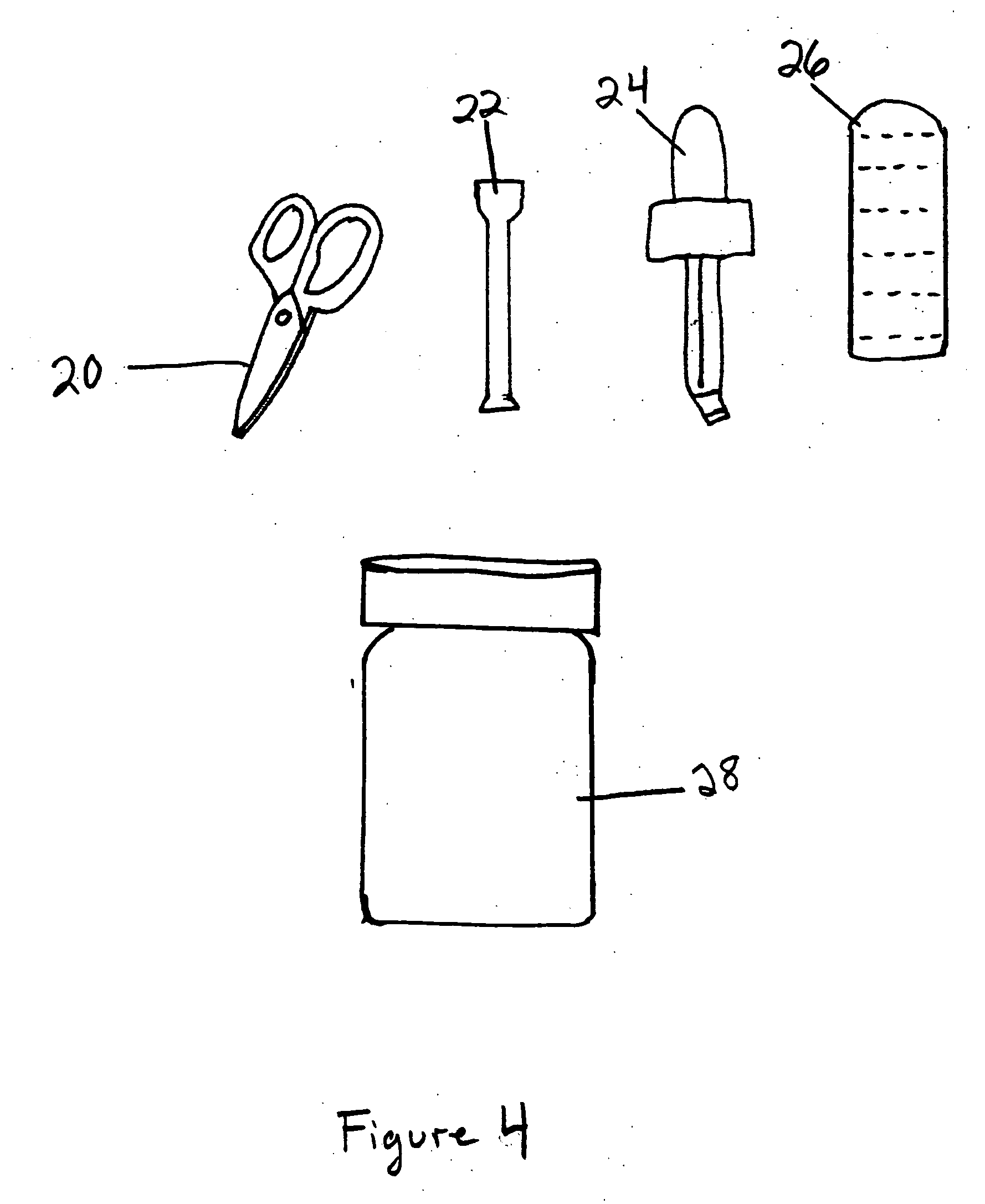Denture liner, denture liner kit and method for making a denture liner
- Summary
- Abstract
- Description
- Claims
- Application Information
AI Technical Summary
Benefits of technology
Problems solved by technology
Method used
Image
Examples
example 1
[0109] A denture liner was prepared by combining components in amount as listed in Table 1. This liner was made by blending all the components in a Hobart7 mixer. A pre weighed sample, which was approximately the size of a typical table tennis ball, was sandwiched between two release papers. Using a hydraulic Carver7 press, and a shim gap of 0.5 mm, the sample was compressed at 10 tons for 20 seconds. The compressed composition was then cut by hand to the shape of the denture liner.
TABLE 1IngredientContent (wt. %)PEMA21Triacetin28BPBG (Morflex 190)21Polyox15NaCMC15
[0110] The polymer component of this denture liner is PEMA, which functions as a main film former, vehicle, gap filler and adhesive carrier. The plasticizer component consists of triacetin and BPBG. The adhesive component includes polyox and NaCMC. Specifically, polyox is a tackifier and a mucoadhesive. NaCMC is a swelling component and a mucoadhesive.
[0111] The denture liner of this example cures and sets as a result o...
example 2
[0114] A denture liner is prepared by combining components in amounts as listed in Table 2 in the same manner as the liner in Example 1.
TABLE 2IngredientContent (wt. %)PEMA35Triacetin17.5BPBG (Morflex 190)17.5Polyox15NaCMC15
[0115] This denture liner also contains a trace level of ethyl alcohol, which is added to make the material more flowable. The other components of this denture liner perform the same functions as in the liner of Example 1.
example 3
[0116] A denture liner kit is prepared by providing a packet with two compartments, as shown in FIG. 1. PEMA, NaCMC and polyox are placed in compartment 1 in powder form. PVA, triacetin and BPBG, which are in liquid form, are placed in compartment 2. The amounts of each of the ingredients in the kit are as listed in Table 3.
TABLE 3IngredientContent (wt. %)PhaseTriacetin28LiquidBPBG21LiquidPVA5SolidPEMA16SolidPolyox15SolidNaCMC15Solid
[0117] Once the separator 3 between compartment 1 and compartment 2 is breached, the components are mixed to form a denture liner composition. In this composition, each of the components performs the same functions as in the liner of Example 1. PVA, like PEMA, is used as a vehicle polymer, which adds flexibility, flow and reversibility to the denture liner.
PUM
| Property | Measurement | Unit |
|---|---|---|
| Fraction | aaaaa | aaaaa |
| Fraction | aaaaa | aaaaa |
| Fraction | aaaaa | aaaaa |
Abstract
Description
Claims
Application Information
 Login to View More
Login to View More - R&D
- Intellectual Property
- Life Sciences
- Materials
- Tech Scout
- Unparalleled Data Quality
- Higher Quality Content
- 60% Fewer Hallucinations
Browse by: Latest US Patents, China's latest patents, Technical Efficacy Thesaurus, Application Domain, Technology Topic, Popular Technical Reports.
© 2025 PatSnap. All rights reserved.Legal|Privacy policy|Modern Slavery Act Transparency Statement|Sitemap|About US| Contact US: help@patsnap.com



